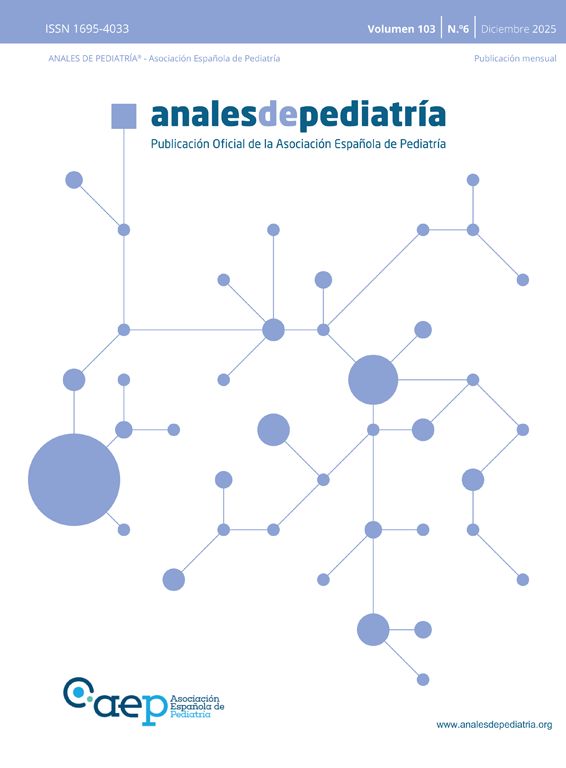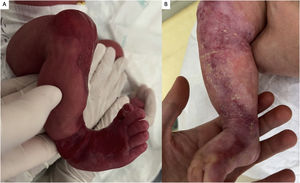A 10-day-old neonate product of non-consanguineous marriage presented with congenital absence of skin over the right lower limb at birth. The physical examination revealed an S-shaped area of localized absence of skin from the knee to the anteromedial surface of the right leg, ankle and foot, accompanied by dystrophy of the first toenail and small erosions in both feet (Fig. 1). The mucosal membranes were not involved. There were no systemic abnormalities. The father and paternal grandfather of the patient presented similar lesions. A genetic study revealed a heterozygous missense pathogenic variant (C.6191 G > p-Gly2064Ala) in the COL7A1 gene, leading to diagnosis of dominant dystrophic epidermolysis bullosa (EB) with congenital localized absence of skin (CLAS). Local wound care and wraps were recommended, and the lesion healed in full after 5 months.
Bart syndrome1,2 is a rare disorder characterized by the association of localized aplasia cutis congenita typically involving the lower extremities, EB and nail abnormalities.2 There have been previous reports of CLAS in locations other than the lower extremities and additional extracutaneous abnormalities.2,3 The pattern of inheritance of the associated EB may be dominant or recessive. Historically, dystrophic EB has been the most detected variant, but simplex or junctional EB are also possible.2,3 Nail involvement is not required for diagnosis. The diagnosis of Bart syndrome is confirmed by genetic testing, in some cases supported by antigen mapping and histopathological findings.1,2






